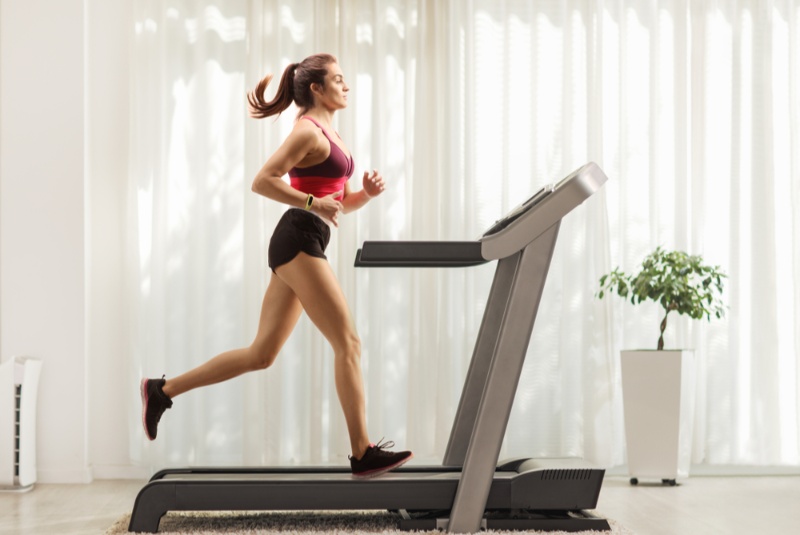Fitness has become an integral part of our daily lives, and with the growing popularity of home workouts, treadmills are a top choice for many fitness enthusiasts. A treadmill offers a convenient and effective way to maintain cardiovascular health, improve endurance, and help with weight management—all from the comfort of your home. However, with numerous models on the market, how can you ensure you’re making the right investment? Whether you’re a casual walker or training for a marathon, this comprehensive guide provides everything you need to know to make a smart purchase.
1. Define Your Fitness Goals and Usage
Understanding your fitness goals is the first step to choosing the treadmill that best meets your needs. Consider how often and intensely you plan to use it:
- Light Usage: If you’re looking for moderate use or light daily walks, an entry-level treadmill may meet your needs without overloading you with features.
- Intensive Training: For serious runners or those training for distance, look for a treadmill with a strong motor, extensive tracking features, and a spacious deck to accommodate your stride.
- Walkers: A treadmill for walking doesn’t require top speeds but should have a sturdy build and comfortable cushioning to prevent joint strain.
Aligning the treadmill features with your fitness goals helps ensure that it serves you well over time.
2. Key Features to Consider
There are several critical features to examine closely to ensure you get the right fit for your needs:
- Motor Power: Measured in continuous horsepower (CHP), this determines the treadmill's overall performance. Most home users find 2.0 to 3.0 CHP sufficient, but runners might prefer 3.0 CHP or higher for sustained use.
- Deck Size: If you have a long stride or plan to run frequently, consider a deck length of 58–60 inches. For walkers, 55 inches is generally adequate.
- Cushioning: Quality cushioning reduces impact on the joints and prevents injury. Ensure that the deck offers the right balance—not too hard or too soft—and doesn’t create a ‘drag’ as you walk or run.
- Speed and Incline: Most treadmills offer speeds up to 10 mph, suitable for many users. Serious runners may want a treadmill that goes up to 12 mph or more. Additionally, consider incline capabilities if you want to simulate varied outdoor terrain.
3. Explore Technological Enhancements
Modern treadmills often come with tech features that can enhance your workout experience:
- Pre-Set Workouts: These routines, designed by fitness experts, provide varied intensities to help you meet your fitness goals.
- Heart Rate Monitoring: Built-in pulse monitors allow you to stay within your target heart rate zone for maximum results.
- Bluetooth and Wi-Fi Connectivity: Many models sync with fitness apps, allowing you to track your progress or stream music and videos.
- Interactive Training: Some high-end models offer real-time coaching, making it easy to follow guided workouts and stay motivated.
4. Consider Space and Foldability
It’s essential to ensure that you have enough space to comfortably accommodate your treadmill. For those with limited space, foldable treadmills offer a practical solution. These models can be stored upright when not in use, making them ideal for small homes or shared spaces.

5. Warranty and Customer Service
A good treadmill is a considerable investment, and warranty coverage is essential. Look for:
- Labor Warranty: At least one year of coverage is recommended.
- Parts Warranty: Two to three years for parts is ideal.
- Frame and Motor Warranty: Many manufacturers offer a lifetime warranty on the frame and motor, which is a sign of durability.
Additionally, check the brand’s reputation for customer service, as good support can be crucial if you experience any issues.
6. Research Reviews and Seek Recommendations
Online reviews, fitness forums, and advice from friends or trainers can provide invaluable insights. Reviews reveal how a treadmill performs over time, often highlighting aspects not covered by technical specs alone. Pay attention to feedback about the machine’s durability, ease of use, and customer support experiences.
7. Budget Considerations
Treadmills come in a wide price range, from affordable models under $500 to high-end machines costing thousands. Determine a budget based on your intended usage, but remain flexible. Sometimes, spending a bit more initially saves on repairs or replacements later.
8. Test the Treadmill in Person
If possible, test out a few models in a local store. Pay attention to stability, noise level, ease of use, and the feel of the cushioning. Testing ensures you’re comfortable with the machine before making a long-term commitment.
9. Safety Features
If you live with children or pets, safety features become especially important. Look for models with a safety key or easy-to-reach emergency stop button. These features can prevent accidents and give you peace of mind during workouts.
10. Think About Long-Term Fitness Goals
Fitness is a journey, and your needs may evolve over time. Even if you’re just beginning, consider where you see yourself in a year or two. Choosing a treadmill that can accommodate your progress ensures that it will remain relevant as your fitness level improves.
Investing in a treadmill is a significant step toward better health. By defining your fitness goals, understanding the essential features, and thoroughly researching options, you’re setting yourself up for an effective, long-term solution to staying fit. Remember, the best treadmill is the one that suits *your* needs and encourages consistent use, helping you to stay motivated and reach your fitness goals.




